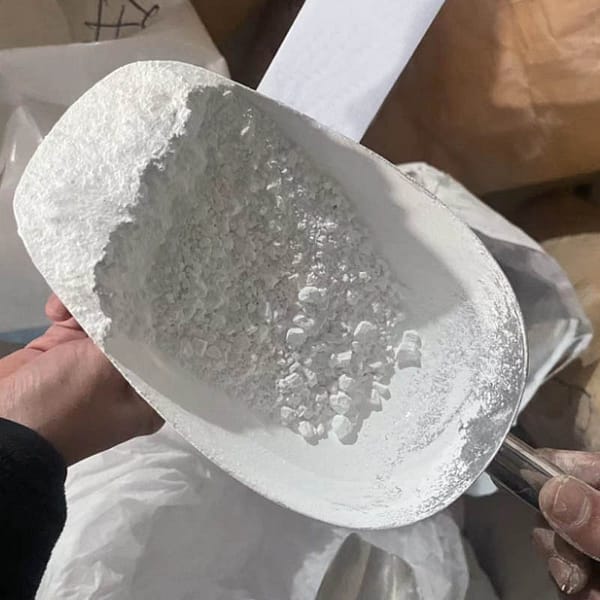In the vast expanse of industries of titanium dioxide, which is also referred to as TiO2, titanium white also known as Pigment White 6 (PW6) shines like a bright star, especially in the realms of paints, plastics, paper and rubber. This versatile compound, well-known for its stunning white pigment plays an essential role in the transformation of raw materials into vibrant finished products. Let’s delve into the wonders of titanium dioxide by exploring its uses, manufacturing processes and the profound influence it exerts on many industries.
The Canvas of Titanium Dioxide: A palette of Possibilities
Titanium dioxide is an essential ingredient in many products. It enhances the appearance and performance of the items we use on a daily basis. Pigment White 6 is used to make paints. It gives a clear and opaque white that enhances the vibrancy of industrial and artistic applications.

In the plastic industry, titanium dioxide is not just color, but also functions as a UV stabilizer providing protection from the damaging UV radiation’s harmful effects. This dual function makes it an important component in various plastic products including packaging materials and sturdy outdoor products.
The Manufacturing Alchemy of Titanium Dioxide Production Processes
The production of titanium dioxide requires a number of intricate processes which have two primary methods leading the way that are the sulfuric acid method as well as the chlorination process. Each method has its unique intricacies and applications, contributing to the versatility of titanium dioxide across different industries.
Sulfuric Acid Method. This involves the reaction of the ore that contains titanium with sulfuric acids, producing a titanium-sulfate. The solution is then hydrolyzed to the titanium oxide that is hydrated. After calcination, the final product will be a fine, white powder that is employed in many industries, including paint and paper.
The Chlorination Method is a different method by using chlorine gas this technique uses titanium-bearing minerals to create titanium tetrachloride. The titanium tetrachloride goes through a series of chemical transformations, resulting in pure titanium dioxide. This process is utilized for the production of titanium dioxide in the plastics and rubber industries.
Titanium Dioxide Applications: Art and Science
Titanium dioxide is a key ingredient in the production of paints across all industries. Its capability to create an intense white color, with outstanding coverage and long-lasting durability makes it a popular option for homeowners, artists and industrial use. Its brilliance isn’t only visual, but functional also. It increases the longevity of painted surfaces.
Shaping Plastics with Radiance: In plastics, titanium dioxide serves a dual purpose. It is not only a colorant, but also a UV stabilizer which shields from the damaging impacts of sunlight. Titanium dioxide is an essential ingredient in the manufacturing process of outdoor plastics since it helps to ensure that they maintain their structural integrity and visual appeal as they age.
Paper Whiteness and Opacity In the paper industry, titanium dioxide contributes to the whiteness and transparency of paper products. Its addition enhances the quality of paper and makes printed content more vivid and more readable. The function of titanium dioxide in the paper-making process goes beyond aesthetics. It’s crucial in improving the quality of printed materials.
Rubber Resilience, UV Resistance – The industry of rubber is able to benefit from titanium dioxide’s UV resistance. For rubber products, specifically those that are exposed outdoors, titanium dioxide acts as a shield against the damaging UV radiation, which ensures the durability and efficiency of rubber-based products.
Titanium Dioxide Impact: More Than Pigment
While the effects of titanium dioxide are very evident in its use as a pigment, its influence is not limited to color. The compound’s ability to enhance the resilience, durability and long-term performance of materials in different sectors makes it an invisibly but vital contributing factor to the durability and functionality of end products.
Titanium dioxide is a chemical that has a significant impact on many industries. It seamlessly integrates into the fabric of their industry. Pigment White 6 is a pigment that adds brilliance to canvases of all kinds regardless of the style, whether industrial or artistic. The production process is a mix of two processes: sulfuric acid and chlorineation. This makes it suitable for a wide range of applications. The possibilities include enhancing the visual appeal of paints, enhancing the protection of the plastics against UV radiation, making paper more bright, or protecting rubber, titanium dioxide is regarded as a testimony to the harmonious blend of science and art in the field of manufacturing. Its dazzling light shines through our daily lives and is the basis for a range of items that are enduring in their shine.
